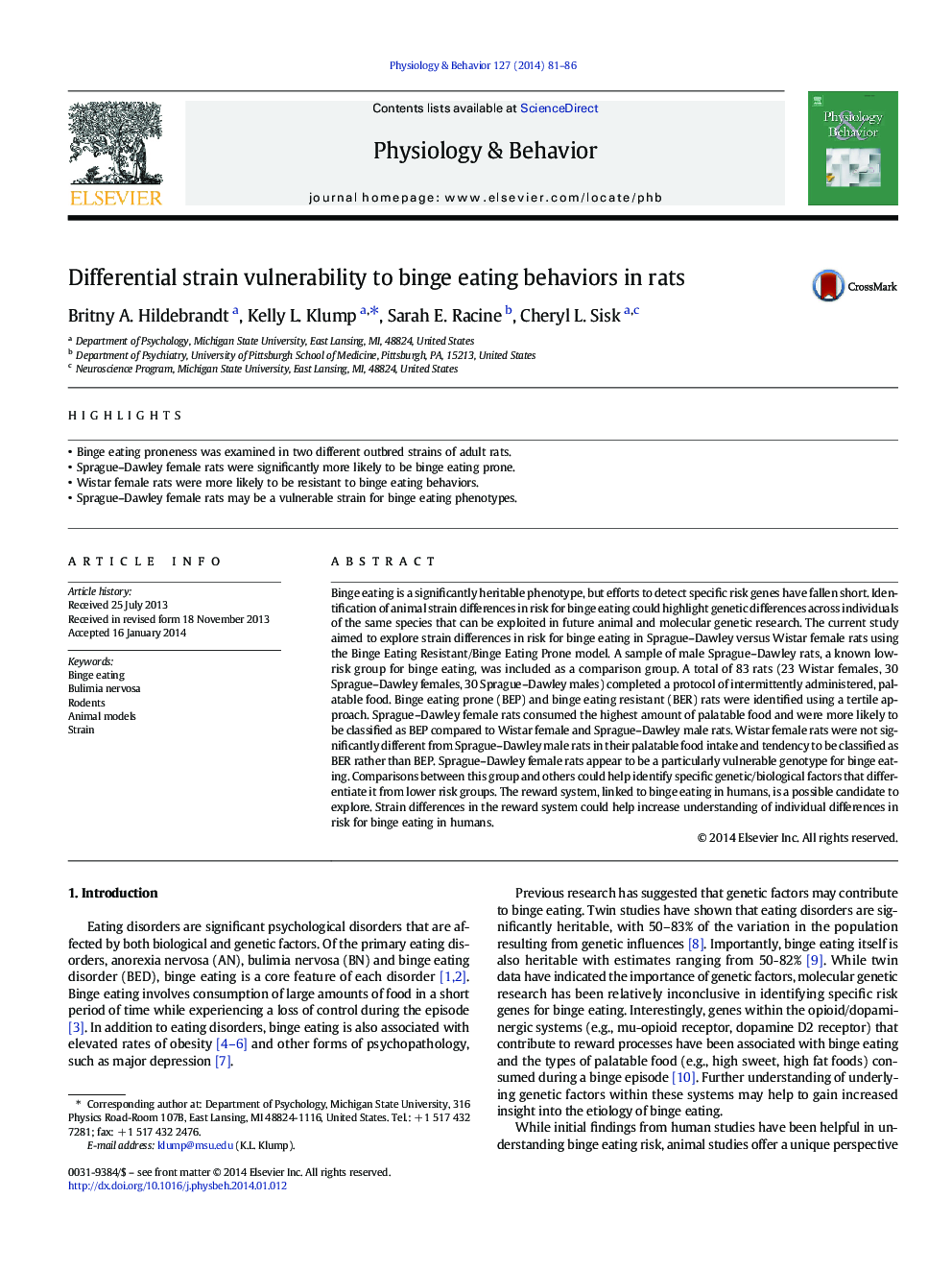| کد مقاله | کد نشریه | سال انتشار | مقاله انگلیسی | نسخه تمام متن |
|---|---|---|---|---|
| 2844301 | 1571190 | 2014 | 6 صفحه PDF | دانلود رایگان |
• Binge eating proneness was examined in two different outbred strains of adult rats.
• Sprague–Dawley female rats were significantly more likely to be binge eating prone.
• Wistar female rats were more likely to be resistant to binge eating behaviors.
• Sprague–Dawley female rats may be a vulnerable strain for binge eating phenotypes.
Binge eating is a significantly heritable phenotype, but efforts to detect specific risk genes have fallen short. Identification of animal strain differences in risk for binge eating could highlight genetic differences across individuals of the same species that can be exploited in future animal and molecular genetic research. The current study aimed to explore strain differences in risk for binge eating in Sprague–Dawley versus Wistar female rats using the Binge Eating Resistant/Binge Eating Prone model. A sample of male Sprague–Dawley rats, a known low-risk group for binge eating, was included as a comparison group. A total of 83 rats (23 Wistar females, 30 Sprague–Dawley females, 30 Sprague–Dawley males) completed a protocol of intermittently administered, palatable food. Binge eating prone (BEP) and binge eating resistant (BER) rats were identified using a tertile approach. Sprague–Dawley female rats consumed the highest amount of palatable food and were more likely to be classified as BEP compared to Wistar female and Sprague–Dawley male rats. Wistar female rats were not significantly different from Sprague–Dawley male rats in their palatable food intake and tendency to be classified as BER rather than BEP. Sprague–Dawley female rats appear to be a particularly vulnerable genotype for binge eating. Comparisons between this group and others could help identify specific genetic/biological factors that differentiate it from lower risk groups. The reward system, linked to binge eating in humans, is a possible candidate to explore. Strain differences in the reward system could help increase understanding of individual differences in risk for binge eating in humans.
Journal: Physiology & Behavior - Volume 127, 29 March 2014, Pages 81–86
